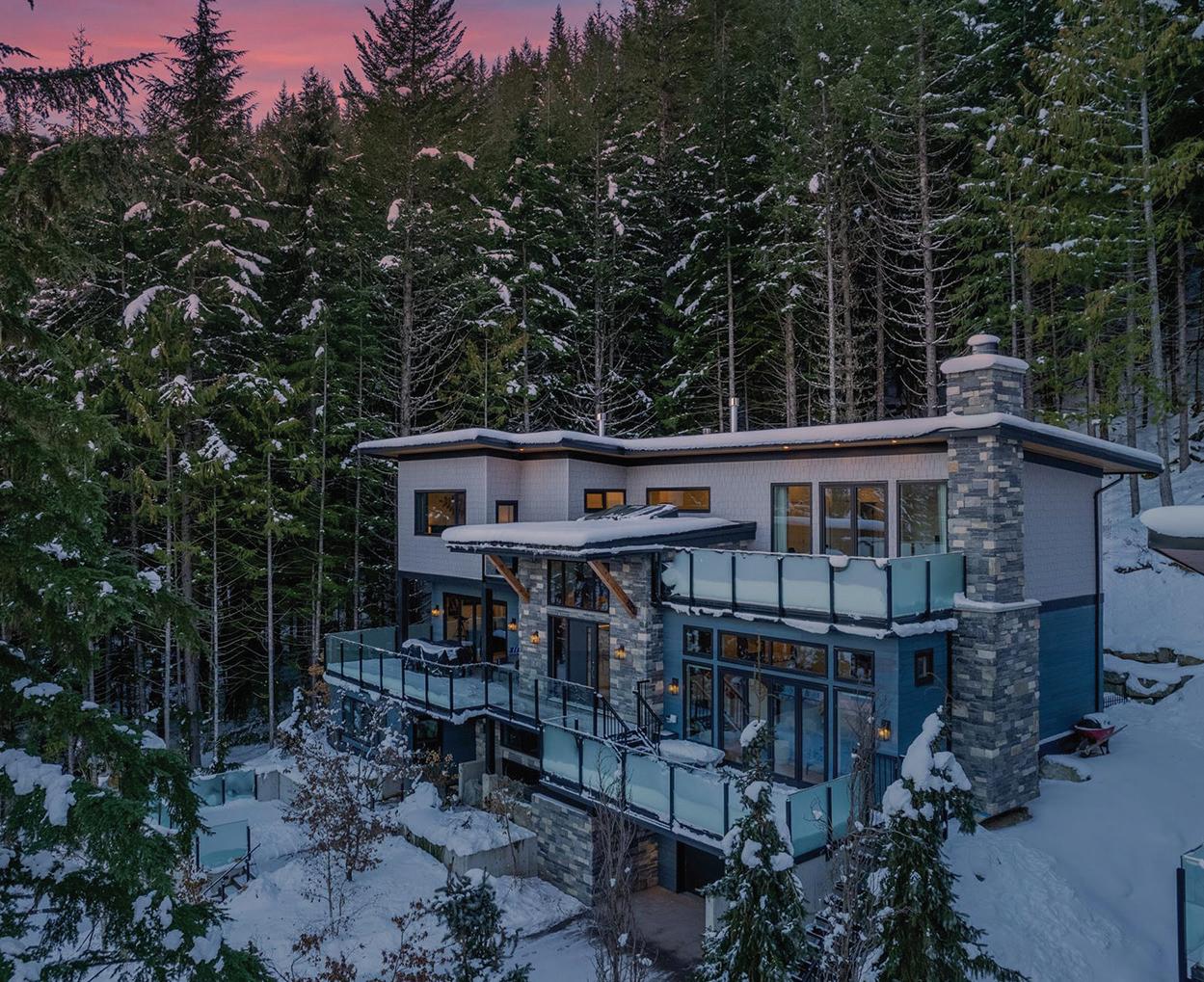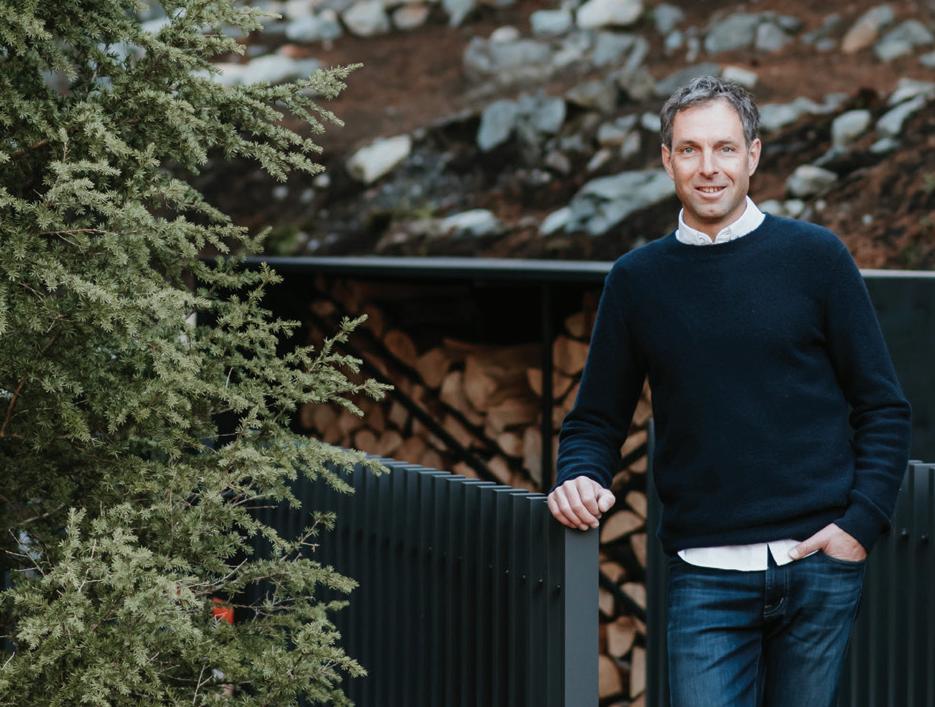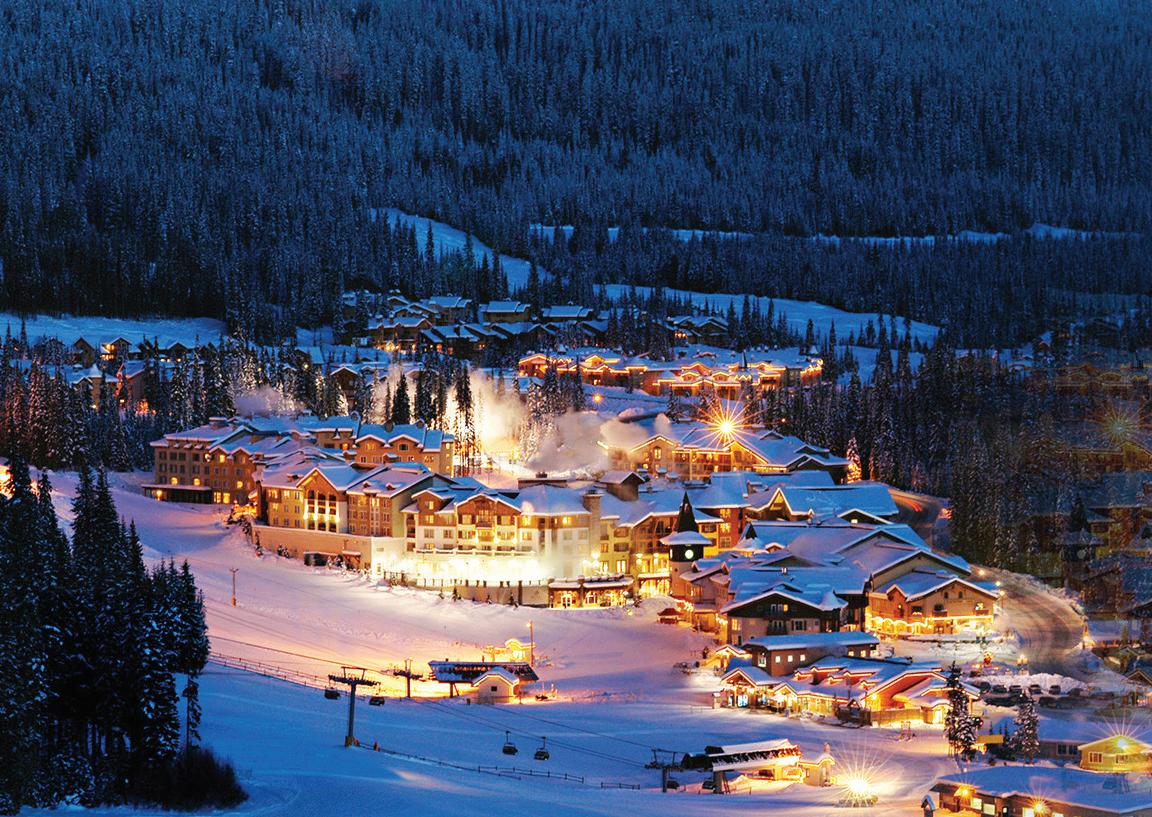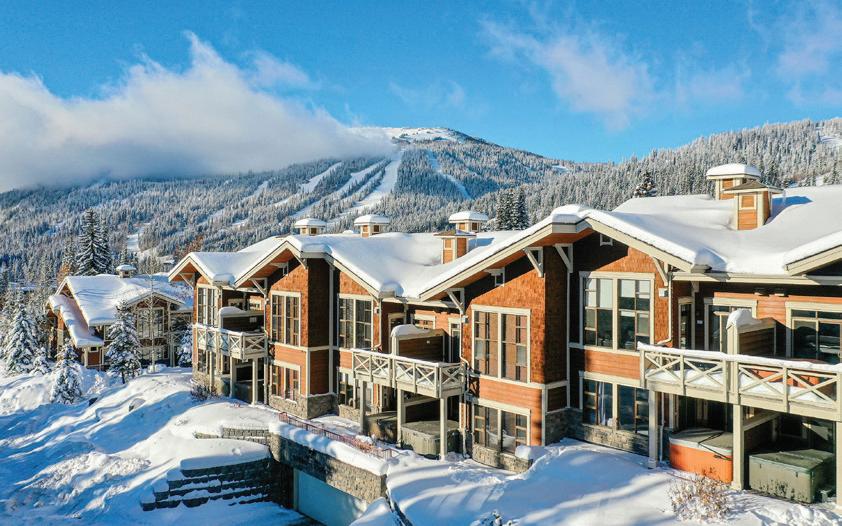
7 minute read
Whistler sees slow start to 2023 in terms of both SAR callouts and snowfall
AS THE CURRENT SNOWPACK CONTINUES TO BUILD, OFFICIALS RECOMMEND KEEPING THINGS CONSERVATIVE IN THE BACKCOUNTRY

Advertisement
BY MEGAN LALONDE
IT HAS BEEN a relatively quiet winter so far for Whistler Search and Rescue (WSAR) crews, according to manager Brad Sills.
Well, until the calendar flipped to February.
“We’ve done seven calls in less than two weeks,” Sills explained in a phone call on Tuesday, Feb. 14. “So almost one every two days.”
With those calls mostly stemming from injuries like blown-out knees or ankles, Sills said none have required WSAR volunteers to respond to an active avalanche—but that doesn’t mean the Sea to Sky hasn’t been subject to elevated avalanche danger this winter.
Avalanches In Sea To Sky Backcountry Lead To Multiple Close Calls
Two separate avalanches were triggered south of Whistler on Wednesday morning, Feb. 8, both reportedly by snowmobiles. According to incident reports posted to Avalanche Canada’s public Mountain Information Network (MIN), the groups involved in both cases were able to selfextricate and leave the area without assistance.
The first slide occurred in Chocolate Bowl, a popular backcountry zone in the Brandywine Mountain area. The massive slab avalanche released while a snowmobiler was riding down a steep roll on a northeast aspect. The slope featured “heavy cross loading” after more than 30 centimetres of new snow fell in the two days prior, according to the report, while the avalanche resulted in an approximate crown depth of 150 to 200 centimetres.
One snowmobiler was caught in the avalanche, “but managed to stay on top” and escaped without injuries. The sled was recovered after being buried in the slide.
Later that morning, another avalanche was remotely triggered on a southeast aspect on nearby Powder Mountain.
According to a MIN post, a snowmobiler “cut across the bottom of the slope, remote triggered small slab off the convex (halfway up the slope) which quickly propagated into most of the slope.” The writer estimated the Size 2 slab avalanche to be about 24 cm thick and 50 m wide, with a run length of about 180 metres.
The avalanches came following a remarkably “close call” that took place further south on Tuesday, Feb. 7, where a skier who was fully buried in a tree well managed to walk away from the incident, thanks to touring partners who located him and administered CPR for 10 minutes.
According to the MIN report posted to Avalanche Canada’s public forum, the incident occurred while a four-person group was skiing Brohm Ridge, near Squamish, after the first skier in the group dropped in.


“After a while standing on top we had no signs of him exiting the run to where the sled was parked at the bottom,” the report reads.
When attempts at both radio and voice contact yielded no response, the post’s writer started travelling down an adjacent slope, triggering a small slab in the process. Once they determined it was safe, two members of the group began the search while the fourth member stayed on top of the ridge as a precaution. After initial signals showed a best reading of 1.9-metres deep for the search subject, searchers “noticed the buried person had skis popping out of the snow still clipped in against a small tree,” the post explained.
“We extricated him, cleared his airway and started CPR as he was unresponsive, non breathing and really Cyanotic.”
The group reportedly performed CPR on the buried skier for 10 minutes until he regained a pulse and started breathing, before ultimately regaining consciousness another 10 minutes later.
“He was able to stand uninjured. With the assistance of a group of sledder [sic] we brought him back to the cabin where [Squamish] Search and Rescue took over,” the MIN post reads. “He is doing good. Most likely a small slab triggered above him, knocked him down and ended up head first into a tree/well. Big thanks to the Cabin team for the help and Search and Rescue. Pretty lucky outcome.”
That luck mostly comes down to having “good buddies,” said Sills.
Based on reports, “They were on it right away,” he said. “They saw he didn’t come out of the woods and instead of going, ‘Oh, I wonder where he is,’ and taking off, they actively went to find him. That just demonstrates an elevated situational awareness.”
The group’s use of transceivers to find the buried skier before quickly digging him out and starting life-saving measures amounts to “fantastic work,” Sills said.
The avalanche hazard rating for the Sea to Sky region was listed as “considerable” for terrain at or above the treeline on Feb. 8. It’s the third classification on the five-level North American Public Avalanche Danger Scale, which ranges from “Low” to “Extreme,”
SEE PAGE 22 >> and calls for dangerous avalanche conditions, meaning natural avalanches are possible and human-triggered slides are likely.












That trio of incidents represent a few positive outcomes amid the multiple tragedies that have occurred in other mountain ranges across B.C. this winter. The province has recorded seven avalanche deaths in 2023. Most recently, two skiers were killed in an avalanche in the western Chilcotins that likely happened on Saturday, Feb. 11.
‘THE CONDITIONS HAVE NOT BEEN THAT GREAT’
Here in the Sea to Sky corridor, Sills said the backcountry seems quieter than it has been in the past couple of years, following a welldocumented boom in outdoor recreation brought on by the pandemic.
“You look in the parking lots on the Duffey or the parking lot at Hanging Lake or Brandywine or any of those areas, and they are noticeably less busy than they have been in the previous COVID years, let’s say,” Sills explained.

Sills doesn’t attribute that slowdown to collective cautiousness or fears of triggering weak layers buried within the corridor’s snowpack. “I think it’s just been really shitty skiing,” he said with a laugh. “Honestly, the conditions have not been that great.”
Avalanche danger in the Sea to Sky corridor was forecast to be “moderate” for terrain at or above the treeline on Thursday, Feb. 16, and low below treeline. Still, forecasters warned those heading into the backcountry to be wary of wind slabs and the potential for wide propogation.

Sills encourages backcountry users to keep adventures on the conservative side, for the time being.
“We had [SAR] members out yesterday on the Duffey Lake, doing a conservative route and [the slope] slid right across their up-track just after they passed it,” he explained.
That said, “Being conservative is subject to interpretation,” Sills added. “I would say be conservative and then do a multiplier of at least two or three … and you’ll probably have a good day.”
Sills compared Whistler’s current snowpack to those more commonly found in Interior regions like Revelstoke or Banff. “The Rockies deal with [this] every year—persistent weak layers and the inability to really be able to forecast what the snowpack is going to do, with confidence,” he said. “There’s just not a lot of confidence in the forecasting right at the moment.”
HOW DO WHISTLER’S 2023 SNOWFALL TOTALS COMPARE TO PREVIOUS WINTERS?
That geographical comparison can also be extended to the amount of snow that has fallen over Whistler’s peaks this winter.
Last week’s storm brought a much-needed dusting to the resort after what has been a dryish start to 2023, comparatively speaking. As listed on Tourism Whistler’s Weather History & Stats page, a total of 174 cm of snow fell over the resort in the first month of the year.
Whistler hasn’t seen that little snowfall in the month of January since 2017, when the resort recorded 134 cm of new snow. The current record for Whistler’s snowiest January was set during the ultimately illfated 2019-20 season, when 477 cm fell over Whistler between Jan. 1 and Jan. 31.



Comparing last month’s total snowfall to last season’s numbers only twists the knife a little deeper: in 2021-22, Whistler received 226 cm of snow in January, which came following 259 cm of snow in November and 239 cm that December.
According to Trevor Smith, a meteorologist with Environment Canada, Whistler’s 2023 snowfall numbers are “kind of below average, comparing to the last, say, seven or eight years.”
Since 2016, “the snowpack had been around at least 245 cm” by early February, he added, but to see a shallower snowpack is “certainly not unprecedented.”
Last February ultimately delivered droughtlike conditions to the resort, when only 61 cm of snow fell. According to Environment Canada data recorded at the Roundhouse weather station on Whistler Mountain, Whistler has already welcomed more than 76 cm of snow to its slopes since Feb. 1 this year.
Whistler Blackcomb’s Feb. 15 weather report states the resort has seen 581 cm of total snowfall so far this season, contributing to a current base depth of 219 cm. (In 2021-22, the resort saw 724 cm of snow fall over the three months spanning from November to January.)
While Smith acknowledged monthly or seasonal forecasts are tricky to predict, he said “it doesn’t look like [the base is] going to be stuck at 200 [cm] for the rest of this month, we should start to see things building above that.”
Experts had previously anticipated a “La
Niña” weather pattern to remain in place for B.C.’s South Coast for most of this winter, where cooler ocean-surface temperatures recorded in the Pacific often correlate with colder temperatures and more precipitation over coastal ranges.
“We’re still kind of in this ‘La Niña’ phase, and although it’s supposed to be weakening, I would think the snowpack would continue to progress through this March, like it would in a typical year,” said Smith.
“If you looked at all the ‘La Niña’ years versus ‘El Niño’ years, you probably would see higher snowpacks,” he acknowledged—but that doesn’t exactly mean a “La Niña” pattern guarantees a higher-than average-snowpack.
“Like I said before, the year’s not done yet,” Smith added.
Typically, a decent snow year sees Whistler’s snowpack peak at a depth of about 300 cm, usually around late March or early April, the meteorologist explained.
If that’s not optimistic enough, just take a look back in Whistler’s own snowfall history to feel immediately better about current conditions: during the 2004-05 season, just 685 cm of snow fell in the resort between November and May. The highest monthly snowfall that season was recorded in April, when 197 cm fell. Even weirder? More snow fell in May that season (45 cm) than in January (42 cm).
More recently, the 2014-15 season also stands out—and not for a good reason, recalled Smith. “The peak snowpack that year was only 206 cm for the whole year,” he said. “That was the highest it got to, so that was definitely one of the worst … snowpacks in recent memories.” n













